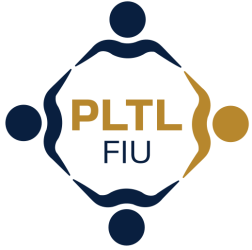This guide is designed to help you navigate through your session effectively, ensuring a productive and engaging learning experience for everyone involved.
📝 Before the Session 📝
1. Prepare Your Materials
- Review the session content thoroughly.
- Prepare your session attendance.
- Ensure all digital tools and platforms (like Canvas) are set up and functioning.
2. Set Clear Objectives
- Define what you want to achieve in the session.
- Prepare a list of key points or questions to guide the discussion.
3. Communicate with Participants
- Send a reminder to students about the session, including topics and any preparation required.
- Inform them about any materials or tools they need to bring.
4. Create a Welcoming Environment
- Arrive early to set up the space.
- Ensure the physical or digital environment is conducive to learning.
🗣️ During the Session 🗣️
1. Start with an Icebreaker
- Engage in a brief activity to warm up and connect with the students (preform Review, Summarize, and Connect [a.k.a. RSC])
2. Clearly State the Session’s Goals
- Outline the objectives and what students can expect to learn.
3. Facilitate Active Learning
- Encourage participation and discussion.
- Use pedagogy techniques to stimulate critical thinking.
- Be attentive to the students’ needs and adapt your approach as necessary.
4. Monitor Group Dynamics
- Ensure that all students are engaged and participating.
- Manage any conflicts or disruptions promptly and diplomatically.
- If you see that not many are participating, call the students in the order they are sitting in-person or in zoom if online.
✅ After the Session ✅
1. Wrap up and Summarize
- Conclude the session by summarizing key points.
- Highlight what was learned and how it applies to their coursework.
- Make sure to take the attendance.
2. Gather Feedback
- Ask students for feedback on the session.
- Conduct a quick verbal survey.
3. Reflect on the Session
- Take time to reflect on what went well and what could be improved.
- Consider both your leading methods and the students’ engagement.
4. Prepare for the Next Session
- Based on the feedback, plan adjustments for future sessions.
- Begin preparing content and materials as needed.
5. Update Records and Follow Up
- Document attendance and participation.
- Follow up on any unresolved questions or issues from the session.

